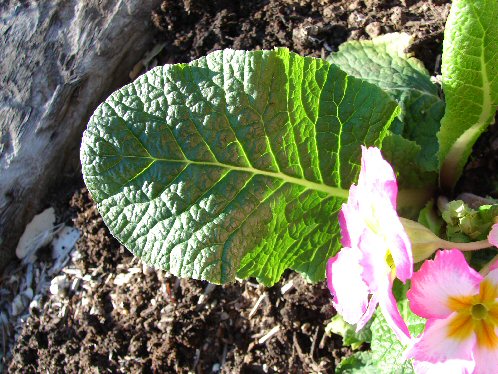Non - Xeriscape.
Common Landscape Plants. Shrubs, Flowers, & Trees.
For The Arizona Desert Environment
Pictures, Photos, Images,
Descriptions, & Reviews.
Polyanthus Primrose or English Primrose, Primula polyantha.
We Are Proud Of Our SafeSurf Rating!
Click On Any Of The Following Links By Amazon.Com
For Books, & Videos About Wildflowers Of Arizona & The Southwest USA. No Obligation!
 |
| Polyanthus Primrose or English Primrose, Primula polyantha. Flowering Plant. January 25, 2012. Yarnell, Arizona. Flowering Plant. Night Time Temperature 29 Degrees F. |
|---|
 |  |
| Leaf. Polyanthus Primrose, Primula polyantha. | Flower. Polyanthus Primrose, Primula polyantha. |
|---|---|
 | |
| Flower. Polyanthus Primrose, Primula polyantha. | Flower. Polyanthus Primrose, Primula polyantha. |
Polyanthus Primrose.
We wish to thank Wikipedia, the free encyclopedia for some of the information on this page. We share images and information with Wikipedia. Primula polyantha are hybrid primroses, crosses especially of P. veris & P. vulgaris. They come in a sundry of colors & forms. Generally speaking they are bred for rapid production & rapid sales & are seldom garden-hardy, but more often growing weaker rather than stronger over time. Especially in Arizona. We recommend them only for winter color in Arizona. There are several hybrids available. They do attract butterflies.
Quick Notes:
Height: 8 - 12 inches high & about 9 inches wide.
Flowers: Large, full clusters of 1 to 2 inch wide blossoms ( the miniature types are smaller ). Can be almost any color; many are very brilliant. Five petals which can overlap and are often indented at the apex. Blossoms may be borne on individual stems, in clusters at stem ends, or in tiered, candelabra - like clusters along the stem.
Flowering Time: Winter to Early or Mid - spring.
Leaves: Green, tongue shaped, to about 8 inches long leaves. They resemble romaine lettuce.
Found: Origin: Himalayas and cool regions of southeast Asia and Europe.
Hardiness:
Soil pH requirements:
Sun Exposure:
Elevation: 0 to 7,500 Feet.
Habitat: Landscaping: Moist, Acid Soil.
Miscellaneous: Hardiness: USDA Zones 5 - 10. Perennial, grown as an annual in the warm Phoenix or Tucson areas. Does not survive summer heat. Prefers light shade, moist, acid soil, rich in organic matter.
|
We Are Proud Of Our SafeSurf Rating!
Click On Any Of The Following Links By Amazon.Com
For Books, & Videos About Wildflowers Of Arizona & The Southwest USA. No Obligation!
| © 1966 - Present, Audrey, Eve, & George DeLange |
